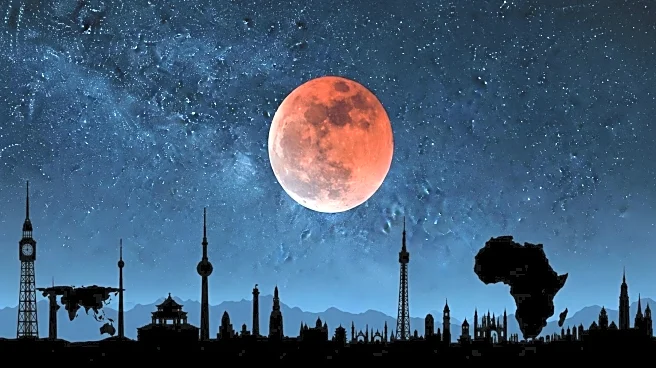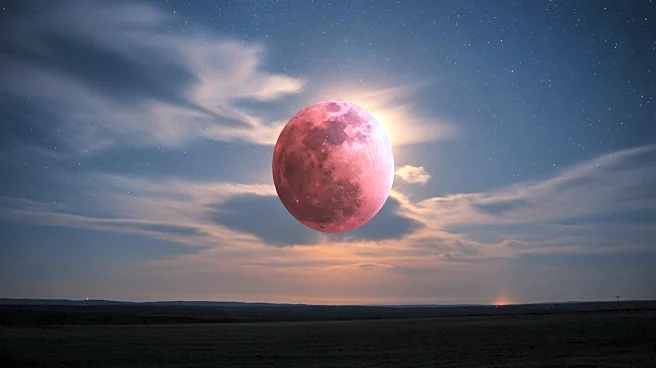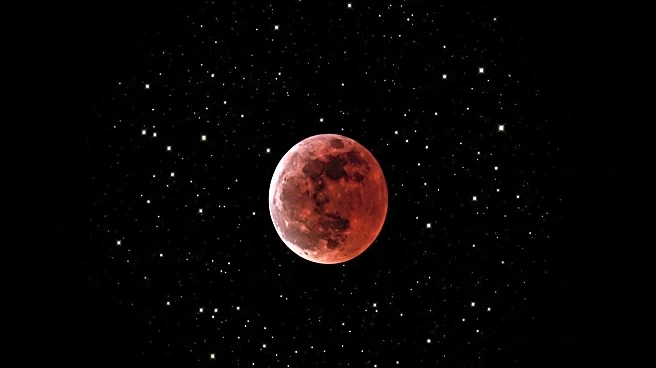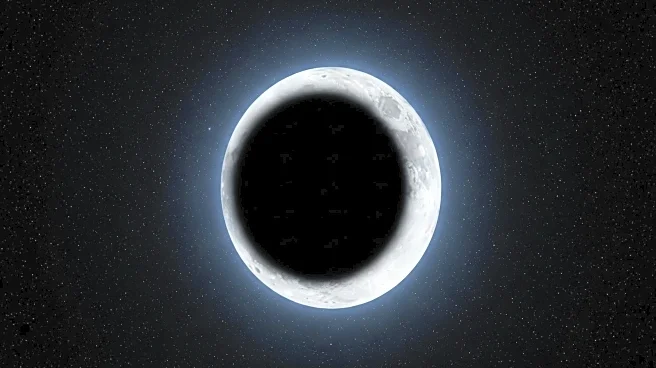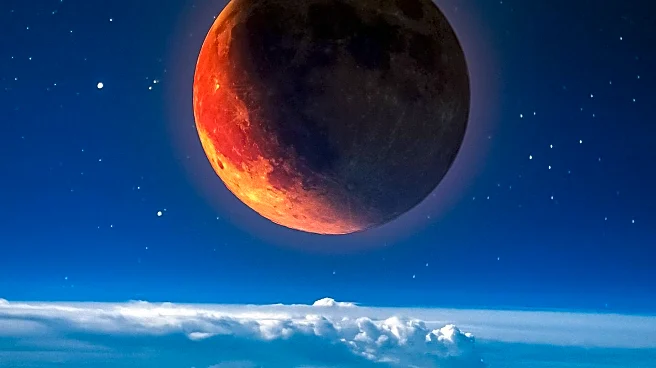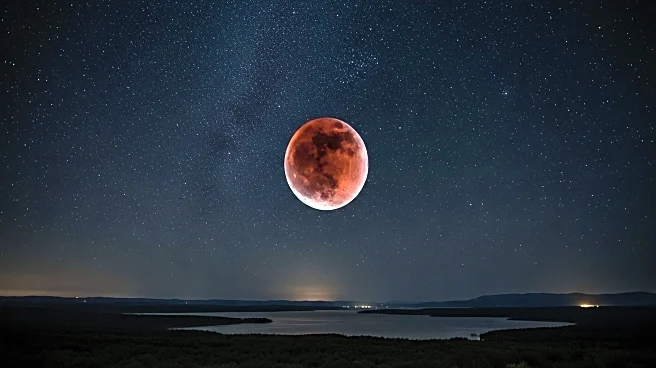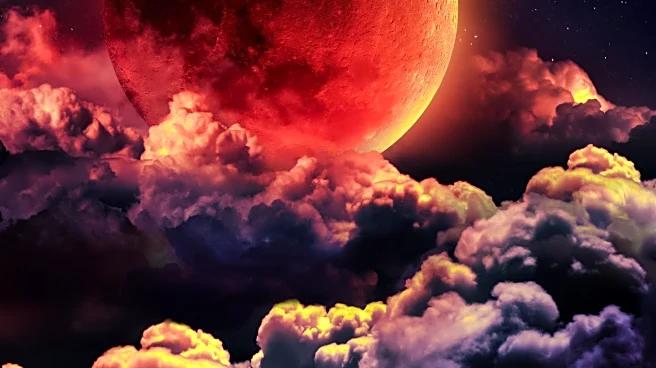What's Happening?
On September 7, 2025, a total lunar eclipse will occur, resulting in a 'blood moon' visible across Asia, central and eastern Africa, and Australia. This astronomical event happens when the Earth positions itself between the full moon and the sun, casting a shadow on the moon. The moon appears red due to Rayleigh scattering, where shorter wavelengths of light scatter away, leaving longer red wavelengths to illuminate the moon. The eclipse's totality phase will start at 17:30 UTC, peak at 18:11 UTC, and end 40 minutes later. While the Americas will miss this event, the Virtual Telescope Project will broadcast it live on YouTube.
Why It's Important?
Total lunar eclipses are less common than partial ones, making this event significant for those in the viewing regions. The phenomenon offers a unique opportunity for educational and scientific observation, particularly in understanding atmospheric effects on light. For astronomers and enthusiasts, it provides a chance to study the moon's surface under different lighting conditions. The event also holds cultural significance in various societies, often associated with myths and folklore. Economically, it could boost tourism in regions where the eclipse is visible, as people travel to witness the spectacle.
What's Next?
The next total lunar eclipse visible in North America will occur in March 2026. This upcoming event will be an opportunity for educational institutions and observatories to engage the public in astronomy. The Virtual Telescope Project's live stream will allow global audiences to experience the eclipse, potentially increasing interest in future astronomical events. As technology advances, such broadcasts may become more interactive, offering real-time data and insights.
Beyond the Headlines
Lunar eclipses like this one can inspire interest in space exploration and science education. They highlight the interconnectedness of celestial bodies and the impact of Earth's atmosphere on astronomical observations. The event may also prompt discussions on the cultural interpretations of lunar phenomena, fostering a deeper appreciation for the diversity of human perspectives on natural events.
